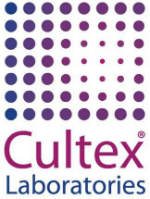Project Partner
Institute for Pharmacology and Toxicology of the German Armed Forces, Munich
seh consulting + services, Paderborn
Walther-Straub-Institute for Pharmacology and Toxicology, Munich
Cultex® Laboratories GmbH, Hannover
Exposure to airborne particles is gaining increasing concern due to the ubiquitous use of loose solids in industry and pharmaceuticals.
Depending on the type of substance, particle size, and concentration, serious health disorders or death could result from an inhalative burden.
Within the EU, the European Registration, Evaluation, Authorisation, and Restriction of Chemicals (REACH) regulation is followed, which predefines a test strategy for toxicological evaluation. It demands the performance of exposure tests for inhalable substances such as gases, aerosols, and particles.
However, data on inhalative toxicity in humans is often not available and results are mostly based on animal experiments. Estimates for the numbers animals used for these tests differ considerably. Up to 10 million animals are used for pharmaceutical testing and approximately 1%-2% of these are used for experiments on acute inhalation toxicity. Alternative methods to animal experiments are urgently needed both for REACH and other regulatory measures, but are currently not available for the field of pulmonary toxicology.
Even though human cell-based test systems are already used in a large number of studies on the toxicological evaluation of substances, their validity with regard to the evaluation of airborne particles is limited due to the non-physiological exposure modalities (submersed cultures). The CULTEX® RFS radial flow system closes this gap.
It is based on the direct exposure of human lung epithelial cells at the air-liquid interface to the substances to be tested. This method allows the direct particle exposure of cellular surfaces.
BMBF 0315710 is a research project funded by the federal ministry of education and research (BMBF), which validated this approach in various laboratories with regard to its technical establishment and performance. The test methods were defined in standard operating procedures (SOP) and could be successfully transferred in two unacquainted laboratories. The reproducibility of the method in and between laboratories could be confirmed, but ECVAM Module 5 and 6 could not be completed.
The current collaborative research project continues immediately on from this point. By optimising the CULTEX® RFS procedure, further validation and refinement of the prediction model should be achieved.
In the first phase, cell exposure systems were established at all sites and the formal requirements for the project created. The cellular test system on A549 cells was established in all laboratories and the culture conditions harmonised. The first experimental block contained tests with clean air, which may not impair the viability of the cells as negative control.
The efficiency of the test procedure was confirmed by analysing a set of known substances such as lactose as a negative substance, copper(II) oxide nano, copper(II) sulfate, and Pural 200. After the successful completion of this project phase it will enter the blind-testing phase by using a variety of coded substances of up to 25 compounds.

